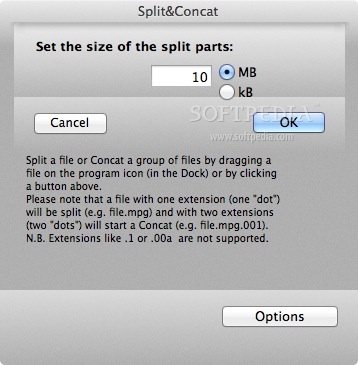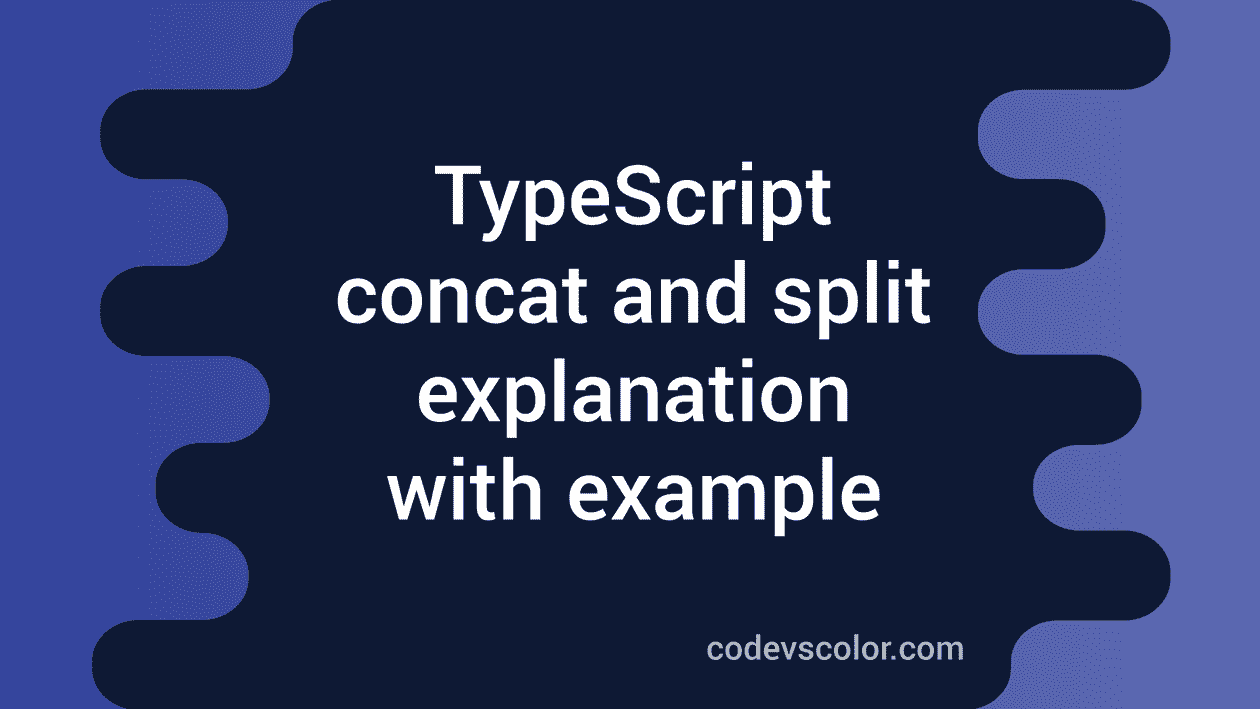
If two strings areĭifferent, then either they have different characters at some index This is the definition of lexicographic ordering. The equals(Object) method would return true. The result is zero if the stringsĪre equal compareTo returns 0 exactly when Positive integer if this String object lexicographicallyįollows the argument string. Lexicographically precedes the argument string. String object is compared lexicographically to theĬharacter sequence represented by the argument string.

The character sequence represented by this The comparison is based on the Unicode value of each character in
JAVA SPLIT CONCAT CODE
Unicode code points (i.e., characters), in addition to those forĭealing with Unicode code units (i.e., char values). The String class provides methods for dealing with Index values refer to char code units, so a supplementaryĬharacter uses two positions in a String. In which supplementary characters are represented by surrogateĬharacter Representations in the Character class for

Or method in this class will cause a NullPointerException to beĪ String represents a string in the UTF-16 format Unless otherwise noted, passing a null argument to a constructor For additional information on stringĬoncatenation and conversion, see The Java™ Language Specification. The Java language provides special support for the stringĬoncatenation operator ( + ), and for conversion of Case mapping is based on the Unicode Standard version Searching strings, for extracting substrings, and for creating aĬopy of a string with all characters translated to uppercase or to Individual characters of the sequence, for comparing strings, for The class String includes methods for examining Here are some more examples of how strings can be used: String buffers support mutable strings.īecause String objects are immutable they can be shared.

Strings are constant their values cannot be changed after theyĪre created. String literals in Java programs, such as "abc", are This technique also works with camelCase identifiers.The String class represents character strings.

This splits on every zero-length string that is preceded by a lower case letter ( (?<=)) and followed by an upper case letter ( (?=)). You can accomplish this using this regular expression: "MyAwesomeClass".split("(?<=)(?=)") You can also have positive lookbehind ( ? Why the "positive"? Because you can also have negative lookahead ( ?!) which will split on every zero-length string that is not followed by a dash: "Ram-sita-laxman".split("(?!-)") More specifically, it mean " positive lookahead". In that example, the ?= means "lookahead". Now, I modify my regular expression ( "") to only match zero-length strings if they are followed by a dash. There is a zero-length string between every character. This splits your string on every zero-length string. To explain this, I will first show you a different split operation: "Ram-sita-laxman".split("") I would love to explain more but my daughter wants to play tea party. What you're actually seeing is a "zero-width positive lookahead". This works because split actually takes a regular expression.


 0 kommentar(er)
0 kommentar(er)
